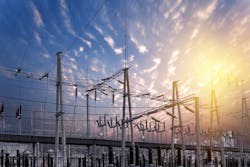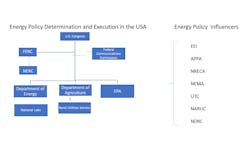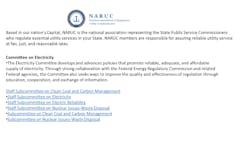Grid Modernization from an Energy Policy Perspective in 2019
Grid modernization efforts (Part 1) Overview
According to Meriam-Webster’s definition, the word policy means “a high-level overall plan embracing the general goals and acceptable procedures, especially of a governmental body.”
Pace, Policy, Regulation, Investment and Knowledge Transfer all impact the efforts aimed at grid modernization in the United States. The momentum of the migration to a modernized or smart grid is directly tied to the health of the economy. Migration to a modern grid is highly dependent upon long-term energy policy development. Considered separately from policy, we need more uniformity in regulatory developments across the country. Capital and human resource requirements are significant — in multi-billion dollars. Do we need to reinvent the wheel? Or can we learn from, and adopt, technical innovations driving other industries forward?
Policy Makers and Policy Influencers
In the United States, as depicted in the accompanying chart, there are several entities at the federal and state levels that either drive energy policy or have a direct effect on policy development and policy oversight and compliance within the electric power T&D industry. First and foremost, federal energy legislative policy developments are promulgated in the Congress via three committees (Official House Natural Resources Committee, Official House Energy and Commerce Committee and the Official Senate Energy Committee). The execution of policy is led by the following organizations.
At the federal level, policies can also be developed and enacted by the Departments of Energy (focused on grid modernization and grid resilience) and Agriculture (focused on the needs of the nation’s nearly 1000 electrical cooperatives), the Environmental Protection Agency (focused on environmental concerns), the Federal Energy Regulatory Commission (FERC), the Federal Communications Commission (FCC) and the North American Electric Reliability Corporation (NERC). Many of the policy-related activities of these organizations focus on strengthening the reliability and security of the country's bulk power transmission assets and on enacting policies and related electric power legislation passed by the Congress.
At the state level, 50 state-level and D.C. commissions are in place to oversee and regulate energy-related distribution activities. These commissions include specialized engineering staff members knowledgeable about the distribution of electricity, water and natural gas within their jurisdictions. The state commissions are united as members of the National Association of Regulatory Utility Commissions (NARUC). NARUC is concerned with current issues, such as the PURPA Reform Act and FERC Order 1000 and the resilience of grids within their states. See below:
Each of the three types of electric utilities found in the United States also has trade associations that provide policy development and congressional liaison for their members. The most important of these at the national level include the Edison Electric Institute (for IOUs); the American Public Power Association (APPA) for public power utilities, including the several federal entities, such as TVA, BPA, ACE, WAPA and SWAPA; and the National Rural Electric Cooperative Association (NRECA) for electrical cooperatives.
Electrical equipment manufacturers also have their own policy development and lobbying organization, known as the National Electrical Manufacturers Association (NEMA). This organization has been especially concerned recently with the adverse economic impact resulting from the imposition of tariffs affecting both imports of electro-materials and exports of electric power equipment.
An additional important industry association involving policy development and FCC lobbying is found in the Utilities Telecommunications Council (UTC), a global trade association dedicated to creating a favorable business, regulatory and technological environment for companies that own, manage or provide critical telecommunications systems in support of their core business.
What’s New with regard to Policy Development over the 2017-2019 Years?
Secretary of Energy Rick Perry has not demolished the DOE during his tenure nor has the EPA been torn asunder by Administrator Andrew Wheeler, although it is flagging in terms of environmental concerns, given its mandate to enforce the nation's Clean Air and Clean Water Acts, as well as numerous other environmental statutes.
The United States is becoming more self-reliant for energy resources with or without federal mandate or guidance. However, fracking may prove to be not worth the effort nor the environmental consequences.
Here is a list of recent issues and concerns that are being reflected in current policy developments at the federal level.
Imposition of Tariffs on Imports of Electro-Materials. U.S. Policy and the Tariff Regime on Selected Imports of Electrical Equipment.
NEMA members rely on its association to be an important critic of tariffs that affect its member companies. The organization officially commented on the imposition of tariffs in September 2018, suggesting that the then-proposed tariffs were effectively taxes on American manufacturers and buyers of electrical equipment that would amount to between US$2.2-US$5.4 billion.
This September, the Office of the US Trade Representative agency issued a request for comment on a proposed tariff increase for the importation of numerous Chinese goods including electro-materials: “In accordance with the specific direction of the President, the U.S. Trade Representative proposes to modify the action being taken in this investigation by increasing the rate of additional duty from 25 percent to 30 percent on the products of China currently subject to tariff actions first taken in June, August, and September 2018, with an aggregate annual trade value of approximately $250 billion.”
New Policies Needed
The rapid growth of energy storage and distributed energy resources means that new policies and regulations will be needed. The country is moving ahead with grid-scale energy storage deployments and newer storage devices down the line to the electric power end-user/consumer communities. Concurrently, the rapid growth of distributed energy resources, mainly renewables-based sources of electricity coming online, have implications for existing regulations — primarily related to the PURPA Act dating back to 1980 and FERC’s Order 1000. The need for integrating more renewables from more non-traditional sources is readily apparent to the industry. Each year, the role of non-hydro renewables is becoming a more critical component of our energy resources.
PURPA Revisited
In September 2019, the FERC proposed to modernize its regulations governing small power producers and co-generators under the Public Utility Regulatory Policies Act of 1978 (PURPA) to better address consumer concerns and market changes in the energy landscape in recent decades.
The Congress enacted PURPA to address the national energy crisis by encouraging the development of small power producers and co-generators, called qualifying facilities (QFs), to reduce the country’s demand for traditional fossil fuels, which were considered to be in short supply. The FERC first enacted its rules in 1980. With scattered changes over the ensuing 39 years, they remain in effect today.
September’s Notice of Proposed Rulemaking (NOPR) constitutes the Commission’s first comprehensive review of its PURPA regulations. The proposed changes are intended to continue encouraging the development of QFs while addressing concerns regarding how the current regulations work in today’s competitive wholesale power markets.
“PURPA laid the foundation for the Commission’s open access transmission policies and the competitive wholesale power markets that we have today,” FERC Chairman Neil Chatterjee stated in the commission’s news release. “But a lot has changed since 1980. We have seen tremendous technological advancements in renewables, increasing sophistication in competitive electric power markets and abundant supplies of domestic natural gas. It is time to modernize the Commission’s implementation of PURPA to reflect those significant developments.”
The NOPR focuses on providing flexibility to state regulatory authorities so that they can accommodate recent wholesale power market developments and streamline the Commission’s policies and practices. Specifically, the proposal allows states to incorporate market pricing into avoided cost energy rates in various ways and to require energy rates (but not capacity rates) to vary during the life of QF contracts. The proposal modifies the “one-mile rule” and lowers the threshold presumption for nondiscriminatory access to power markets from 20 MW to 1 MW for small power production, but not cogeneration, facilities. It also requires states to establish objective and reasonable standards for QFs to obtain legally enforceable obligations for the purchase of their power. Finally, the proposal permits protests of a QF’s self-certification or self-recertification without the need to file and pay for a separate petition for a declaratory order.
“It’s clearly time for the FERC to revisit its PURPA policies,” Chatterjee said. “The Congress told us to review our policies from time to time to ensure that our regulations continue both to protect consumers and to encourage the development of QFs. That is precisely what we are doing here.”
FERC Order 1000
Order No. 1000 is a Final Rule that reforms the FERC's electric transmission planning and cost allocation requirements for public utility transmission providers. The rule builds on the reforms of Order No. 890 and corrects remaining deficiencies with respect to transmission planning processes and cost allocation methods.
Background: In mid-2010, the FERC had issued a Notice of Proposed Rulemaking seeking comment on potential changes to its transmission planning and cost allocation requirements. Industry participants and other stakeholders provided extensive comment in response to the Notice of Proposed Rulemaking. The Commission received more than 180 initial comments and more than 65 reply comments.
Planning Reforms: The rule establishes three requirements for transmission planning:
- Each public utility transmission provider must participate in a regional transmission planning process that satisfies the transmission planning principles of Order No. 890 and produces a regional transmission plan.
- Local and regional transmission planning processes must consider transmission needs driven by public policy requirements established by state or federal laws or regulations. Each public utility transmission provider must establish procedures to identify transmission needs driven by public policy requirements and evaluate proposed solutions to those transmission needs.
- Public utility transmission providers in each pair of neighboring transmission planning regions must coordinate to determine if there are more efficient or cost-effective solutions to their mutual transmission needs.
Cost Allocation Reforms: The rule establishes three requirements for transmission cost allocation:
- Each public utility transmission provider must participate in a regional transmission planning process that has a regional cost allocation method for new transmission facilities selected in the regional transmission plan for purposes of cost allocation. The method must satisfy six regional cost allocation principles.
- Public utility transmission providers in neighboring transmission planning regions must have a common interregional cost allocation method for new interregional transmission facilities that the regions determine to be efficient or cost-effective. The method must satisfy six similar interregional cost allocation principles.
- Participant-funding of new transmission facilities is permitted but is not allowed as the regional or interregional cost allocation method.
Nonincumbent Developer Reforms:
- Public utility transmission providers must remove from Commission-approved tariffs and agreements a federal right of first refusal for a transmission facility selected in a regional transmission plan for purposes of cost allocation, subject to four limitations:
- This does not apply to a transmission facility that is not selected in a regional transmission plan for purposes of cost allocation.
- This allows, but does not require, public utility transmission providers in a transmission planning region to use competitive bidding to solicit transmission projects or project developers.
- Nothing in this requirement affects state or local laws or regulations regarding the construction of transmission facilities, including but not limited to authority over siting or permitting of transmission facilities.
- The rule recognizes that incumbent transmission providers may rely on regional transmission facilities to satisfy their reliability needs or service obligations. The rule requires each public utility transmission provider to amend its tariff to require re-evaluation of the regional transmission plan to determine if delays in the development of a transmission facility require evaluation of alternative solutions, including those proposed by the incumbent, to ensure incumbent transmission providers can meet reliability needs or service obligations.
Compliance:
- Order No. 1000 takes effect 60 days from publication in the Federal Register.
- Each public utility transmission provider is required to make a compliance filing with the Commission within 12 months of the effective date of the Final Rule.
- Compliance filings for interregional transmission coordination and interregional cost allocation are required within 18 months of the effective date.
Listing of websites for Electric Power Energy Policy-Related Organizations
Congressional Level Policy Decisions:
- Official House Natural Resources Committee
- Official House Energy and Commerce Committee
- Official Senate Energy and Natural Resources Committee
Federal Energy-Related Policy Decisions and Planning, Coordination, Execution:
- U.S. Department of Energy
- U.S. Department of Agriculture – RUS
- Federal Energy Regulatory Commission
- North American Electric Reliability Corporation
- Federal Communications Commission
- Environmental Protection Agency
State Regulatory Policy Decision-Making Commissions:
NARUC maintains a website directory of regulatory commissions in all states and D.C.
Utility and Industry Energy Policy-influencing Organizations:
About the Author
Charles W. Newton
President
Charles W. Newton is the president of Newton-Evans Research Co. He has been a 40-year career-long electric power industry researcher of information technology and infrastructure products, markets, and trends.


